When I arrived in the Schiphol Airport at 10.55 PM Sunday evening, I could immediately smell it. Cannabis. Cannabis was in the air, everywhere. I had arrived in the Netherlands, more precisely in its capital city, Amsterdam, one of the only places on Earth where selling and using cannabis is legal. As a child, I’d often travelled to the Netherlands with my family, but only to Rotterdam, from where we’d catch a ferry to England. I really hadn’t seen much of the Netherlands.
Having just one day in Amsterdam isn’t a lot, but due to my plans of exploring the country of Luxembourg more thoroughly, I chose to spend less time in Amsterdam, as it’s a city which is well connected with flights to and from Denmark, unlike Luxembourg, so I can always return.
I caught a train to the center of Amsterdam and immediately fell for the city as soon as I stepped outside the train station. Buildings were lit up everywhere and the canals looked so inviting. I could easily see what the fuss was about. I had a 2,5 kilometre walk to my hostel, but it was a beautiful evening, so it didn’t matter despite how late it was getting.



A sign at my hostel!
I did well at touristing in Amsterdam. I got up early the following morning and started my 8-hour sightseeing trip around the center of the city. I had a long list of things that I wanted to see, although that list would’ve been much longer had I spent more time in the city. I had to cut it down to sights that were within walking distance from each other. By doing that, I saved money on public transport, and I saved time!
Closest to my hostel was Vondelpark, all Amsterdammer’s favourite hang-out place (according to my guide book). The park was opened in 1865 and named after the 17th-century playwright and poet Joost van den Vondel. There’s a long pond that stretches throughout the park, and there are many different facilities such as an open-air theatre, a playground, bars and restaurants.



I then walked into the city ring, to the very center, where almost all streets run along the banks of the famous canals. There are more than one hundred kilometres of canals with 1,500 bridges and 90 islands.
The canal ring area at Herengracht, Prinsengracht and Keizersgracht was dug out in the 17th century during the Dutch Golden Age, and enormous houses were built on the banks of the canals for the rich. In 2010, the canal ring area was placed on the UNESCO World Heritage List!







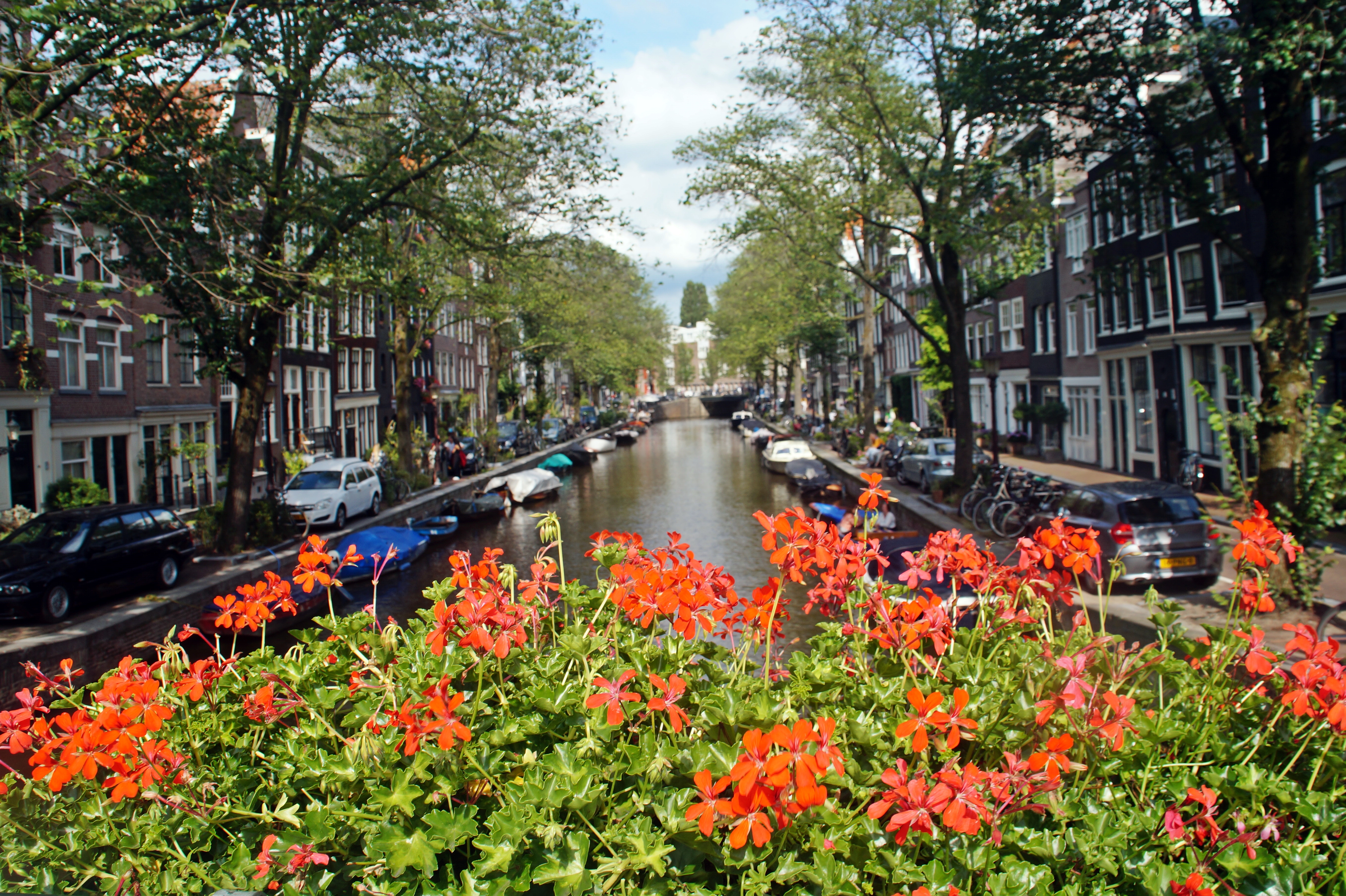
Next up was the bustling Damrak Street, where the early 20th century building Beurs van Berlage is located. Beurs van Berlage is used as a venue for concerts, exhibitions and conferences. With its 40 metre high clock tower, it’s a dominating building on the street.
Another dominating building on Damrak is Koninklijk Paleis or the Royal Palace. This is one of three palaces in the country that are used by the royal family. Originally, the palace was built as a city hall during the Dutch Golden Age in the 17th century, but it later became the royal palace of King Louis Napoleon and has since belonged to the royal family of the Netherlands.
But Damrak is also more than monumental buildings. It’s a very popular shopping street! Walking along the street, seeing so many Primark bags in people’s hands, I simply couldn’t help myself! I HAD to have a look in Primark! I think I spent about an hour in there, but thankfully, I only ended up buying some earrings for 1,5 euros 😛

Damrak Street
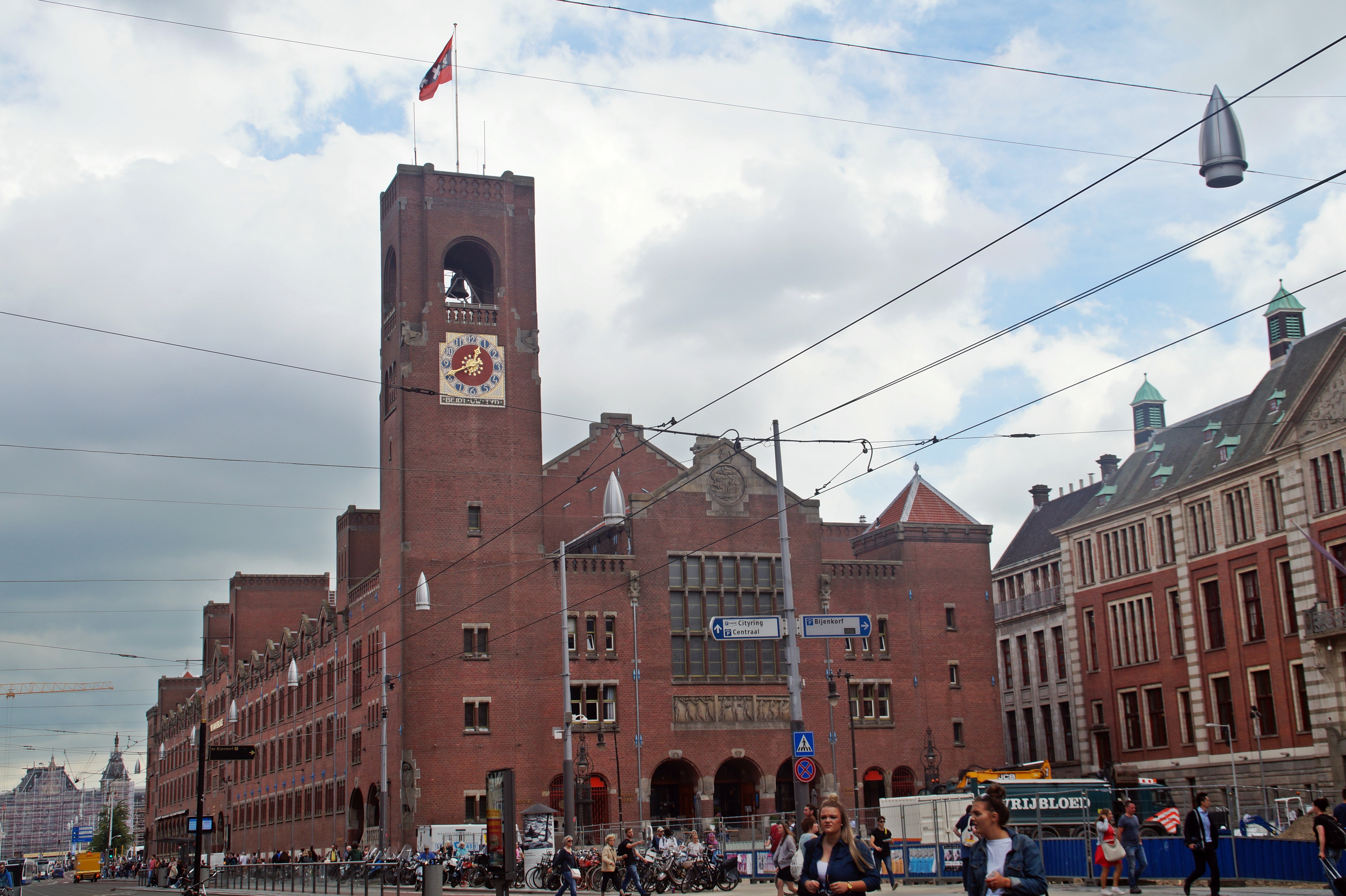
Beurs van Berlage
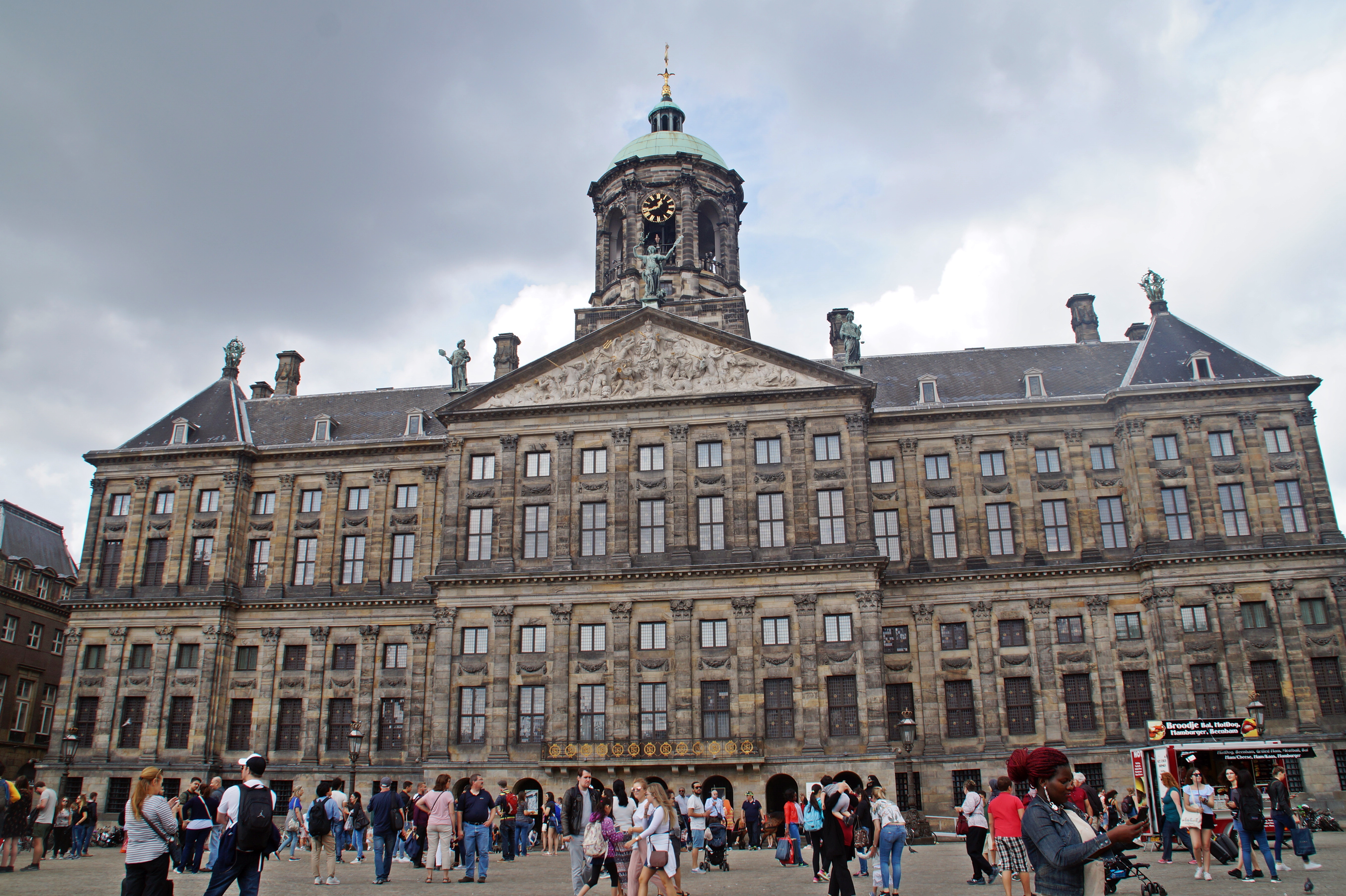
The Royal Palace
Next to the Royal Palace lies Niewe Kerk (“New Church”), a 15th century church, which is no longer used as a church, but as an exhibition hall. It is, however, used for royal weddings, most recently in 2002, when King Willem-Alexander married his Queen Máxima.
Niewe Kerk was built in 1408 after Oude Kerk (“Old Church”) became too small for the expanding population of Amsterdam.
Oude Kerk is the oldest building in Amsterdam as well as the oldest parish church. It was founded in 1213, when a wooden chapel was built at the location of today’s church, which was built in 1306.
Unfortunately, they both cost 10 euros to enter, so I decided not to, as I was on a budget. I only wanted to spend money on one touristy thing in Amsterdam, and that choice was between visiting the Anne Frank Museum or going on a canal cruise.
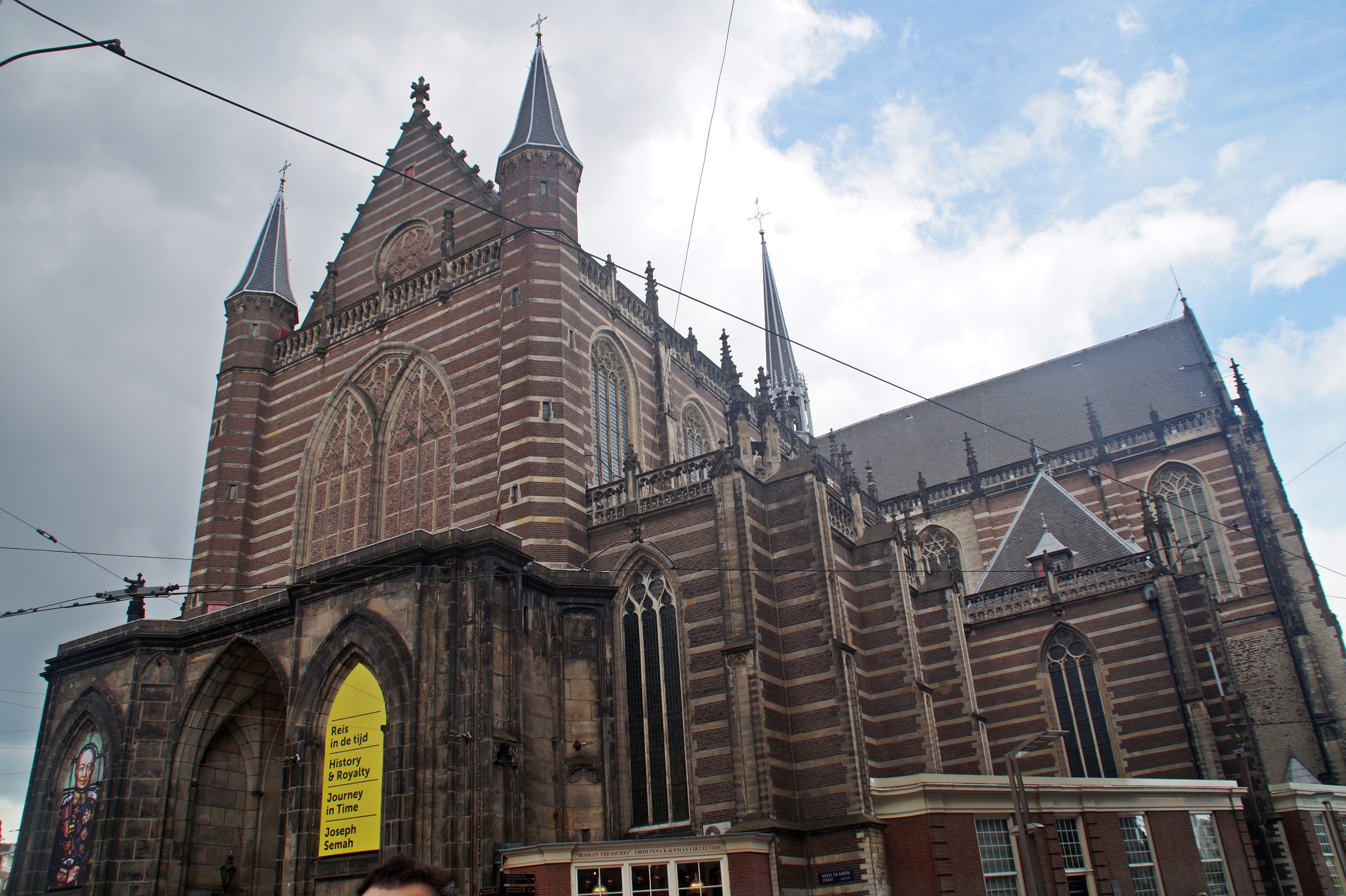
Niewe Kerk
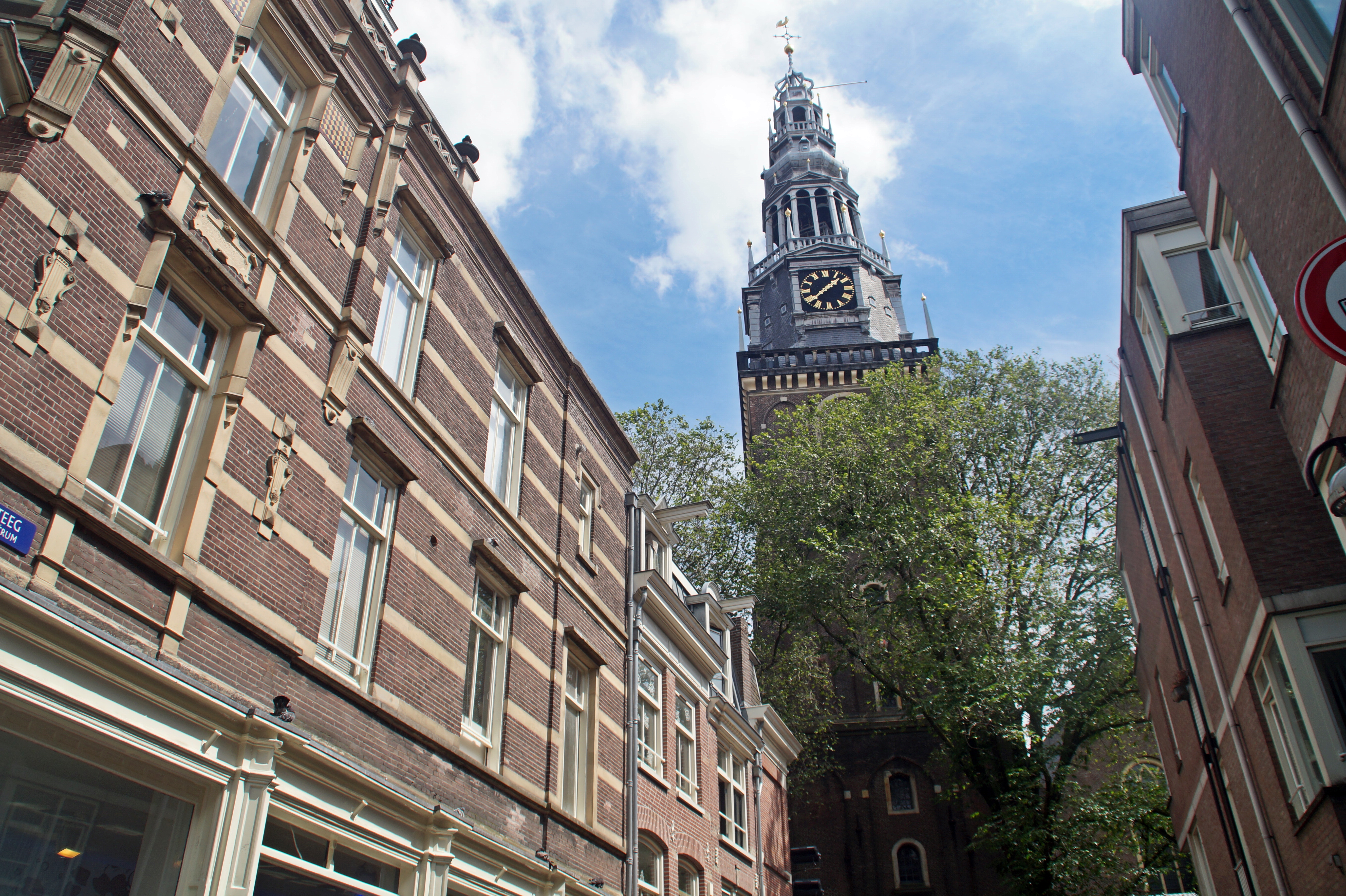
Oude Kerk
The area surrounding Oude Kerk is Amsterdam’s most famous and notorious. If you haven’t already guessed it, I’ll tell you that its full of “coffee shops” that sell cannabis and prostitutes standing in the windows, waiting for customers.
Yes, I’m talking about Red Light District.
Now, I don’t like to judge, but I must admit that cannabis and prostitution is DEFINITELY NOT my thing (mum!), so I didn’t spend much time there. I just went for a quick walk through, so I at least could say that I’d been there, haha!
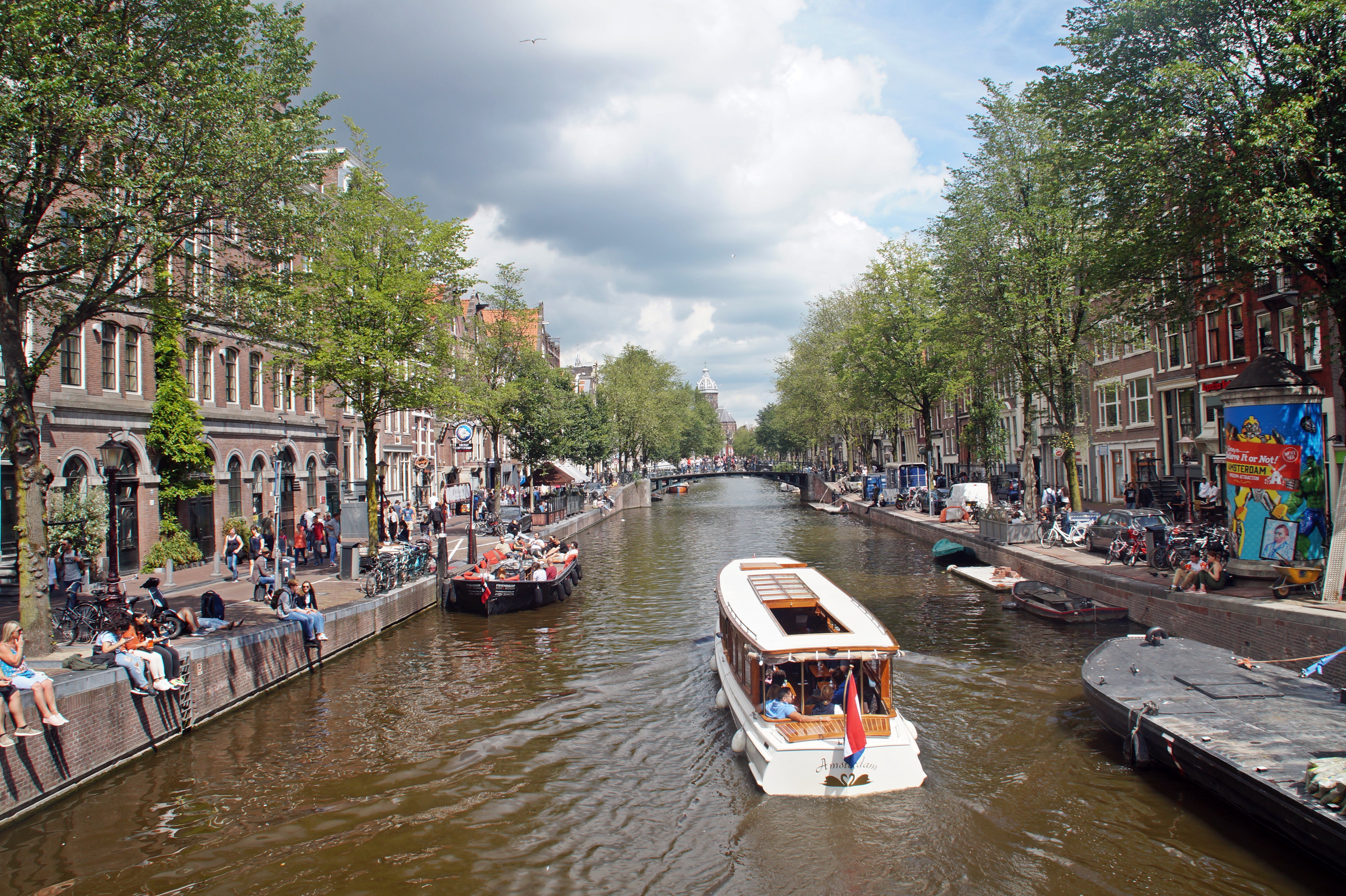
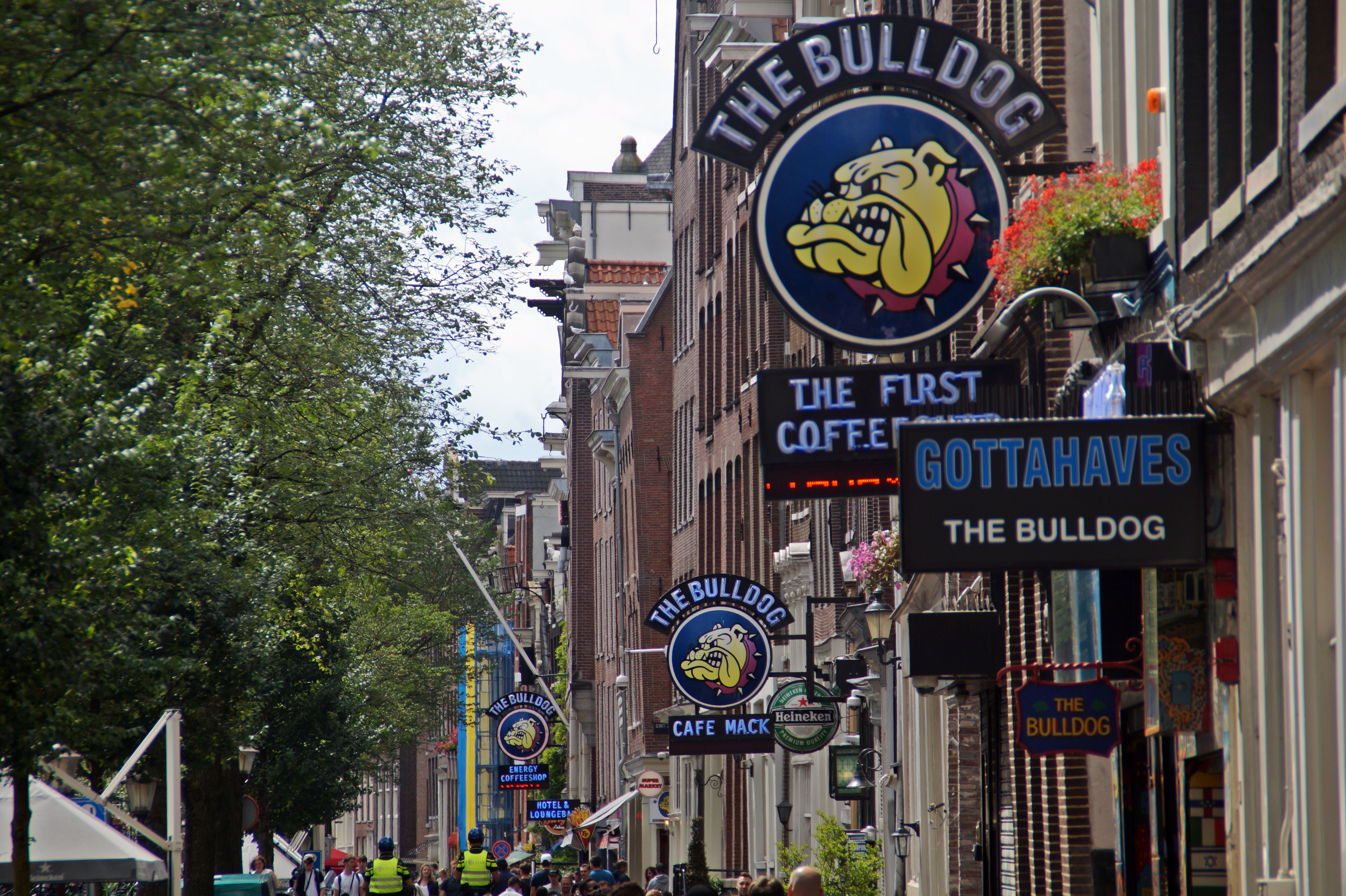

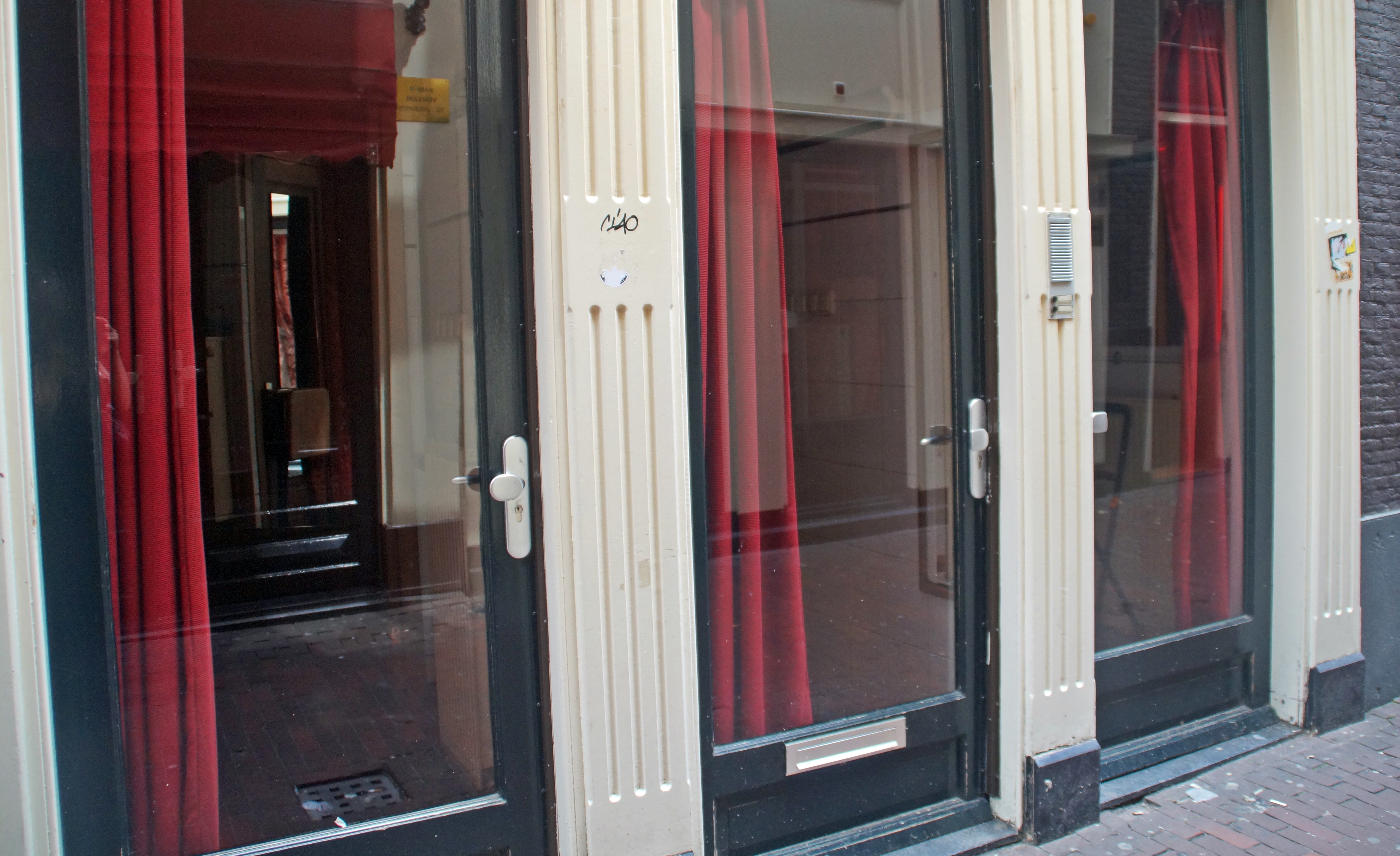

An area that I liked much more was Begijnhof, one of the oldest inner courts in Amsterdam, and the quaint streets surrounding it. There are many historic buildings in the area, including the Houten Huys (“Wooden House”) on Begijnhof 34, which is the oldest of the two still existing wooden houses in Amsterdam. It dates from about 1528!


The Begijnhof

The Wooden House
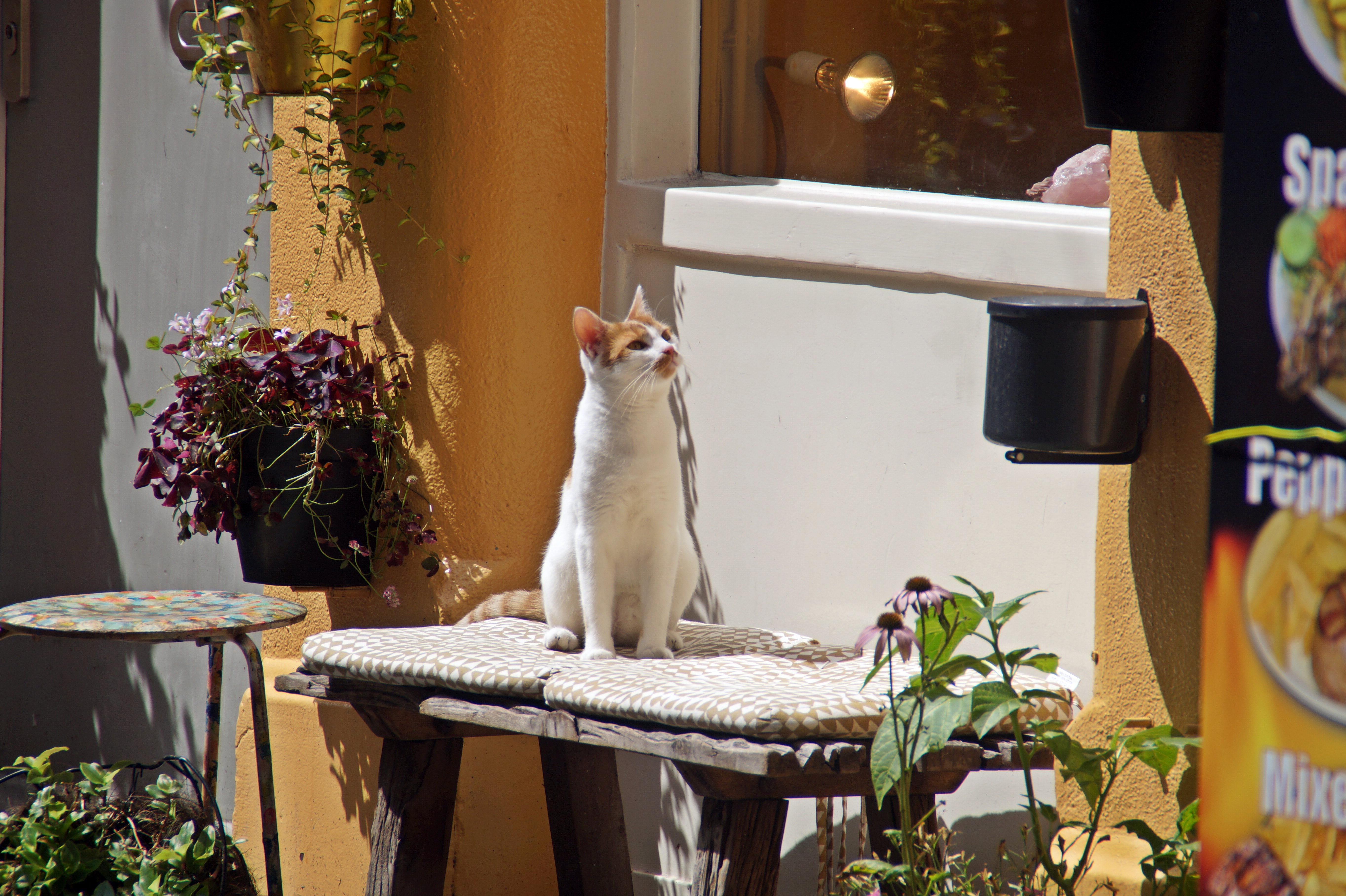
A friend!
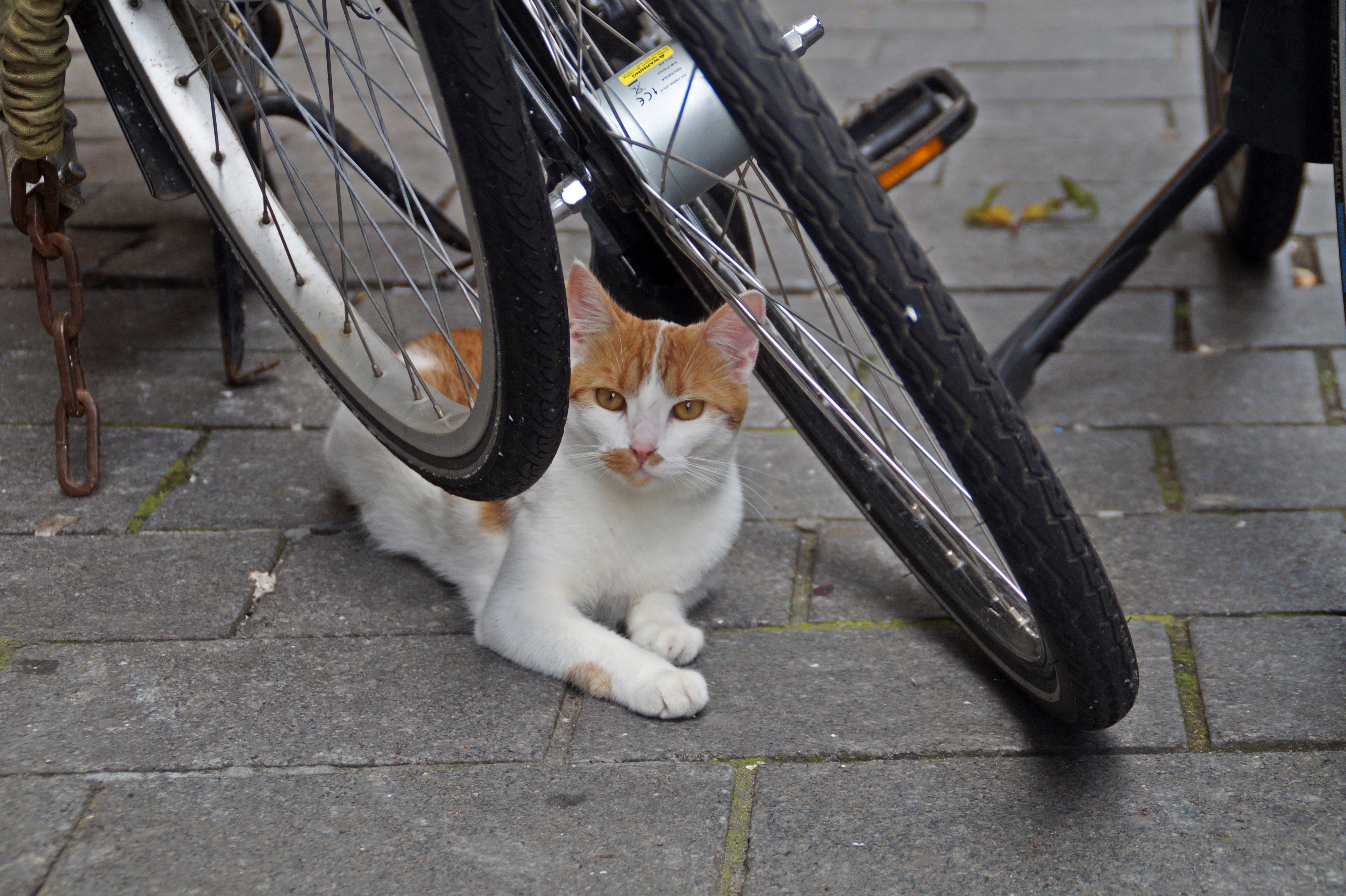
The last thing on my sightseeing list was the Anne Frank House, which is a museum that tells the story of Anne Frank, a young Jewish girl who became famous for her diary writings during the Second World War, which was published in 1947 after her death in a concentration camp. This was the house where Anne Frank and her family hid from Nazi persecution in hidden rooms. I wanted to see it, but when I got there, the queue was enormous and my feet were tired.

Instead, I decided to spend some pennies on a canal cruise, which would take me all around the city center and through some of the prettiest canals for one hour. It cost me 16 euros, which is much more expensive than the canal cruises in Copenhagen (and I thought Copenhagen was the most expensive city in the world, huh…), but I decided it would be worth it.
The canal cruise was good, with plenty of interesting information being told about the places we came by. We sailed through many of the canals that I’d walked along earlier that day, but we also went to new places, including the Ij waterfront, where we saw the futuristic EYE Film Insititute Netherlands building, as well as the A’DAM lookout tower. We also saw a building from 1590, another one of the oldest buildings in the city, and many house boats, which are unique to the Amsterdam lifestyle!
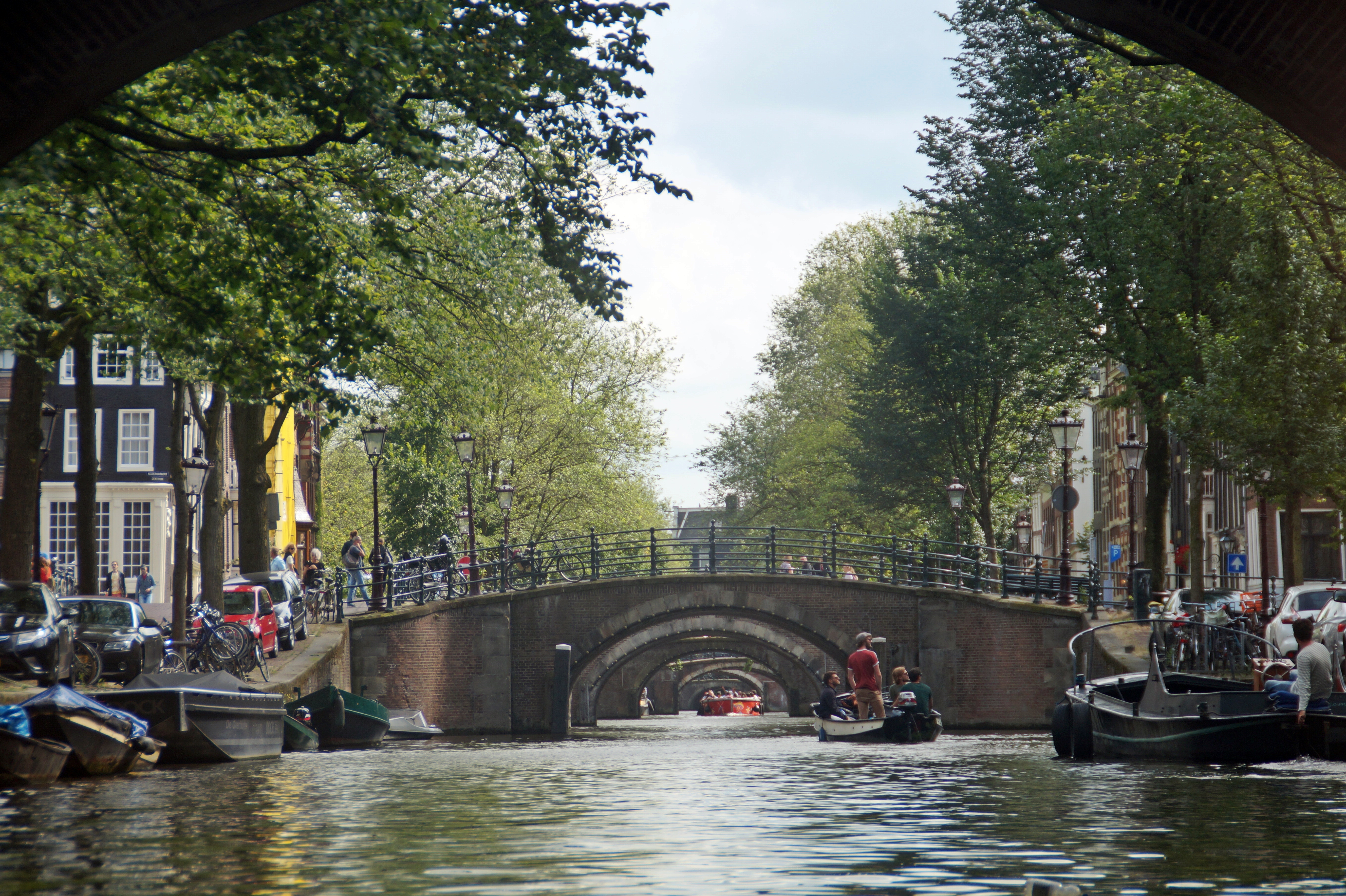

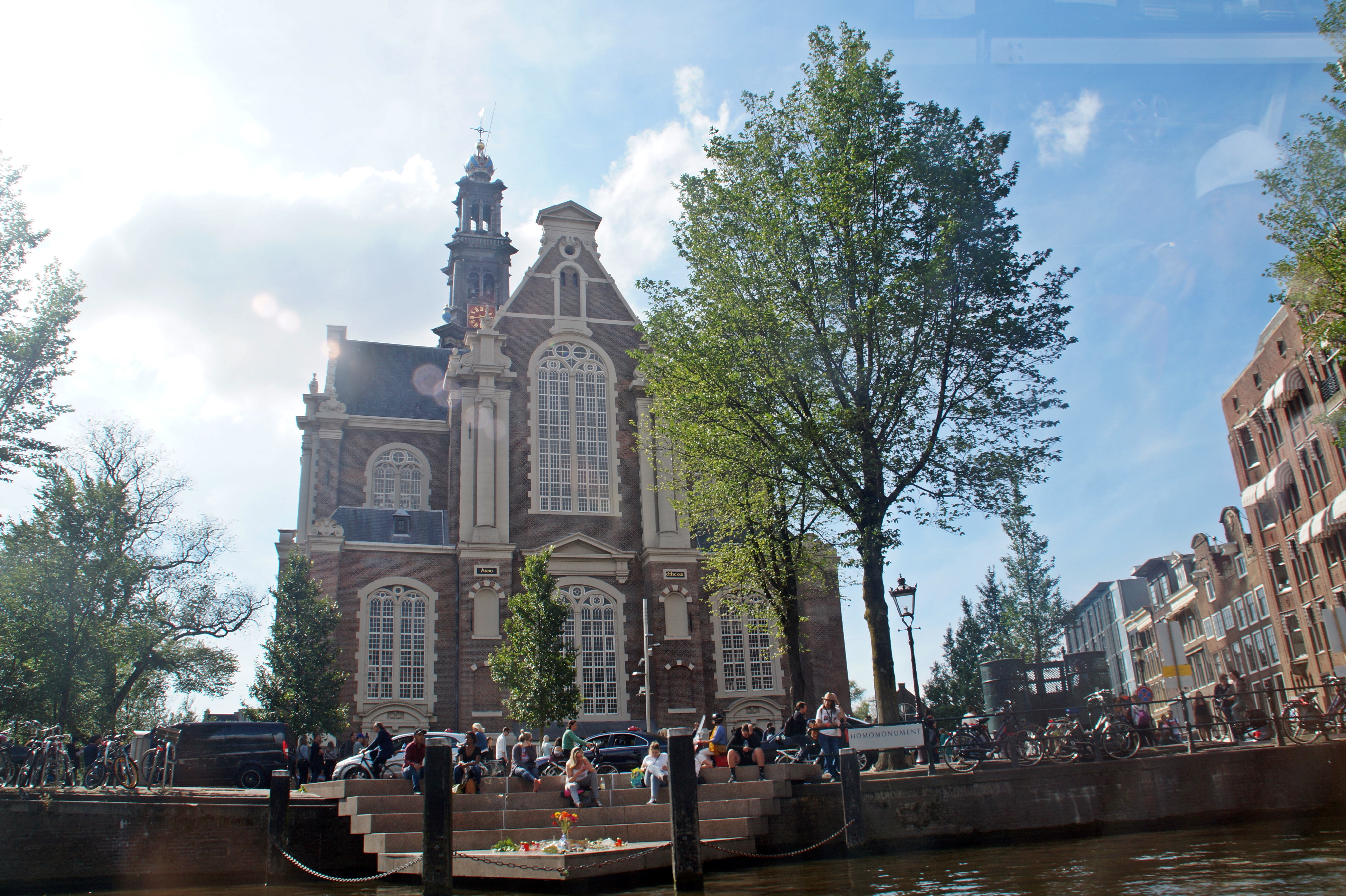


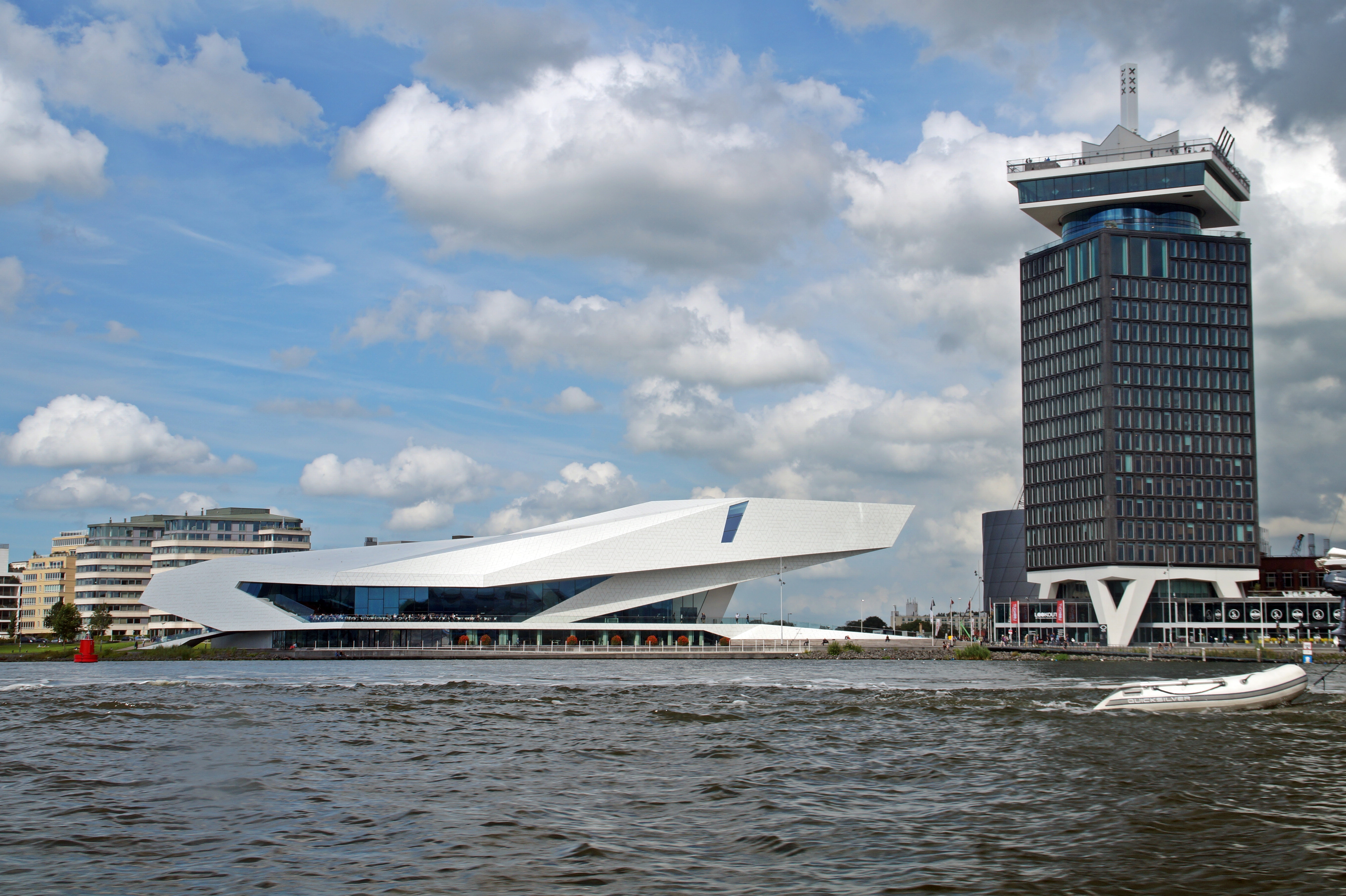
When we arrived back to the starting point, I decided I was done for the day, but then I still had a 50-minute walk to the bus station at Amsterdam Sloterdijk. I was extremely exhausted after that long day of walking, but it was a nice walk nonetheless that took me through many of Amsterdam’s beautiful parks. And I also found some wild blackberries to eat!
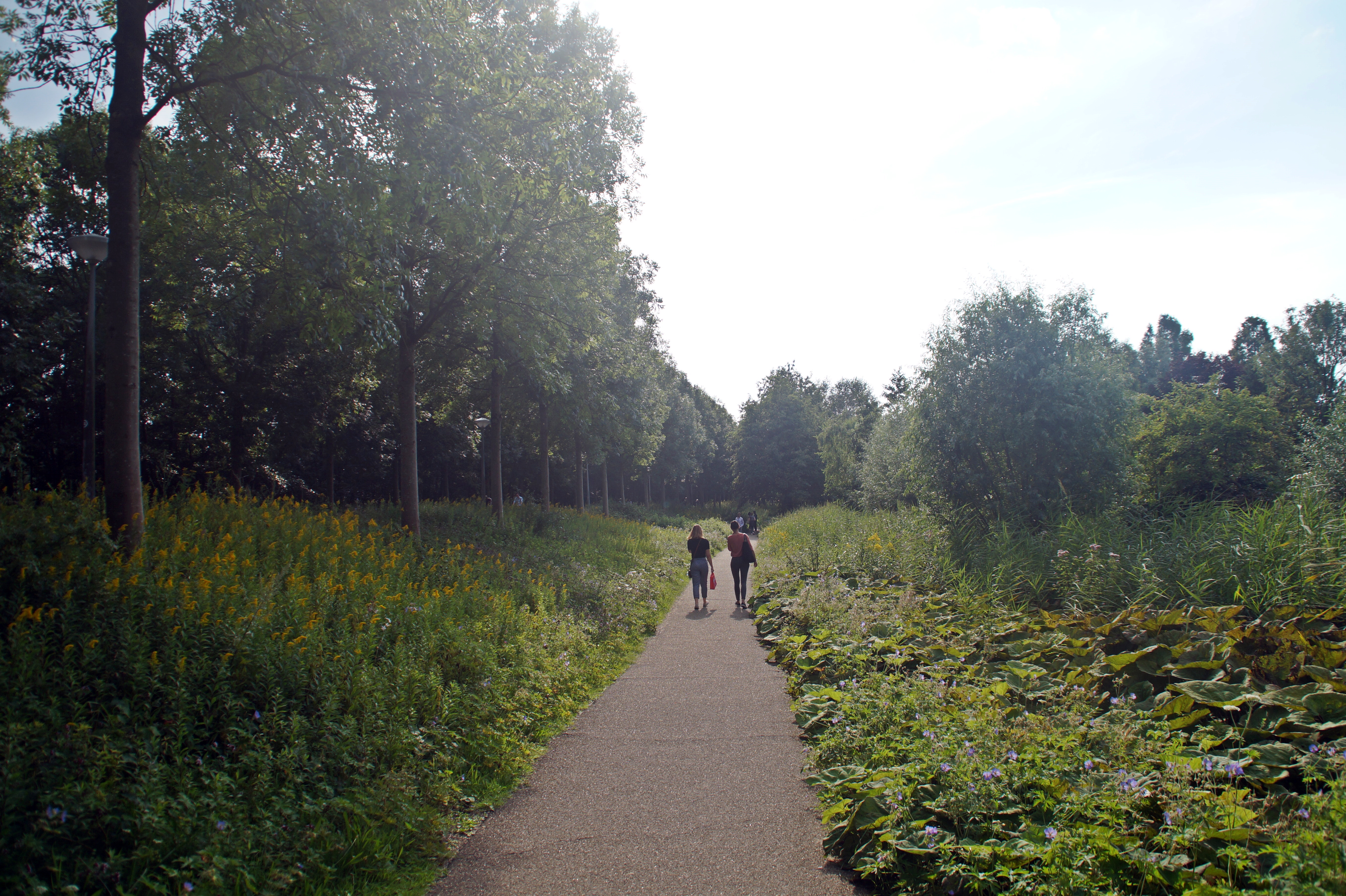
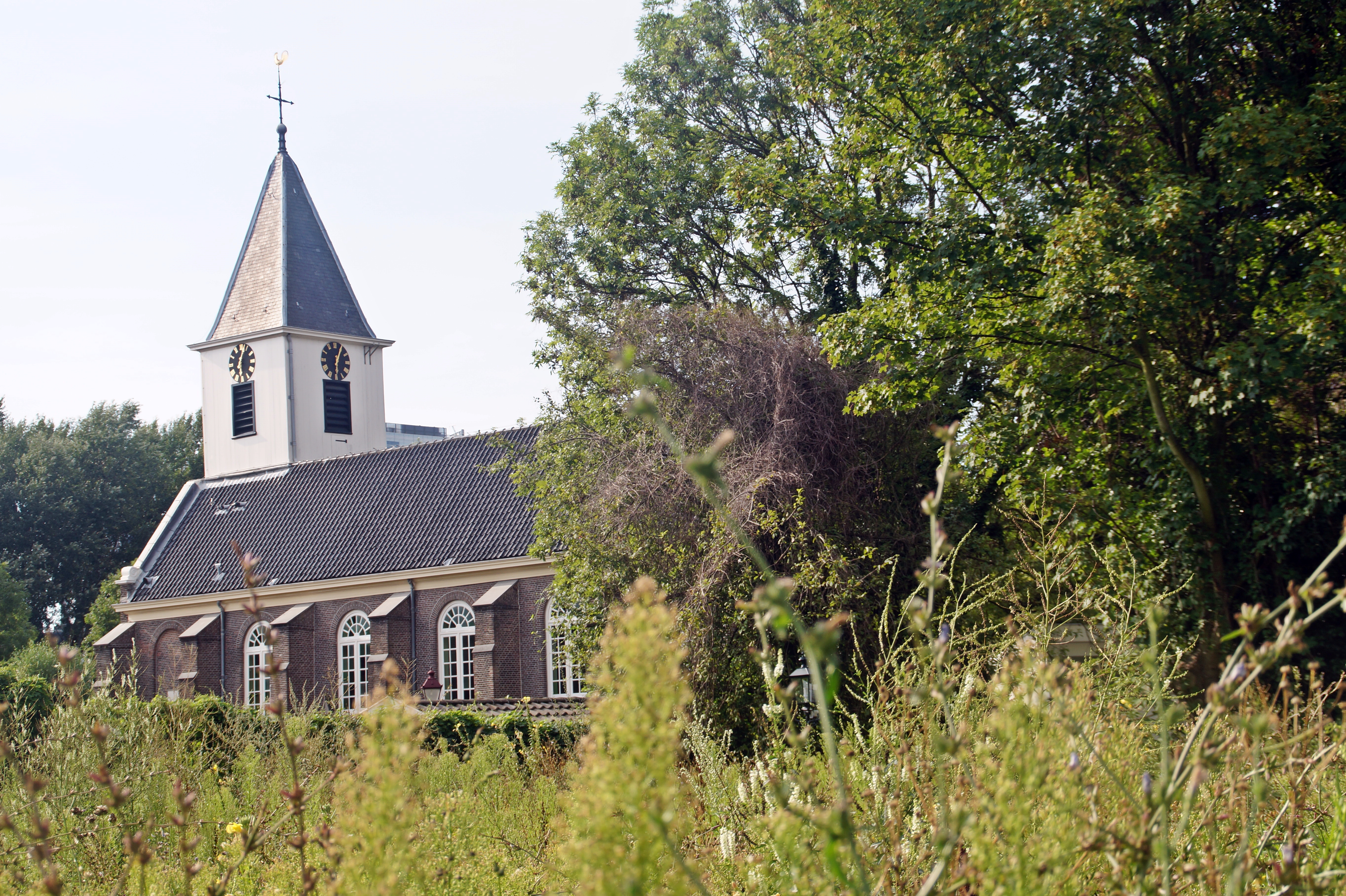
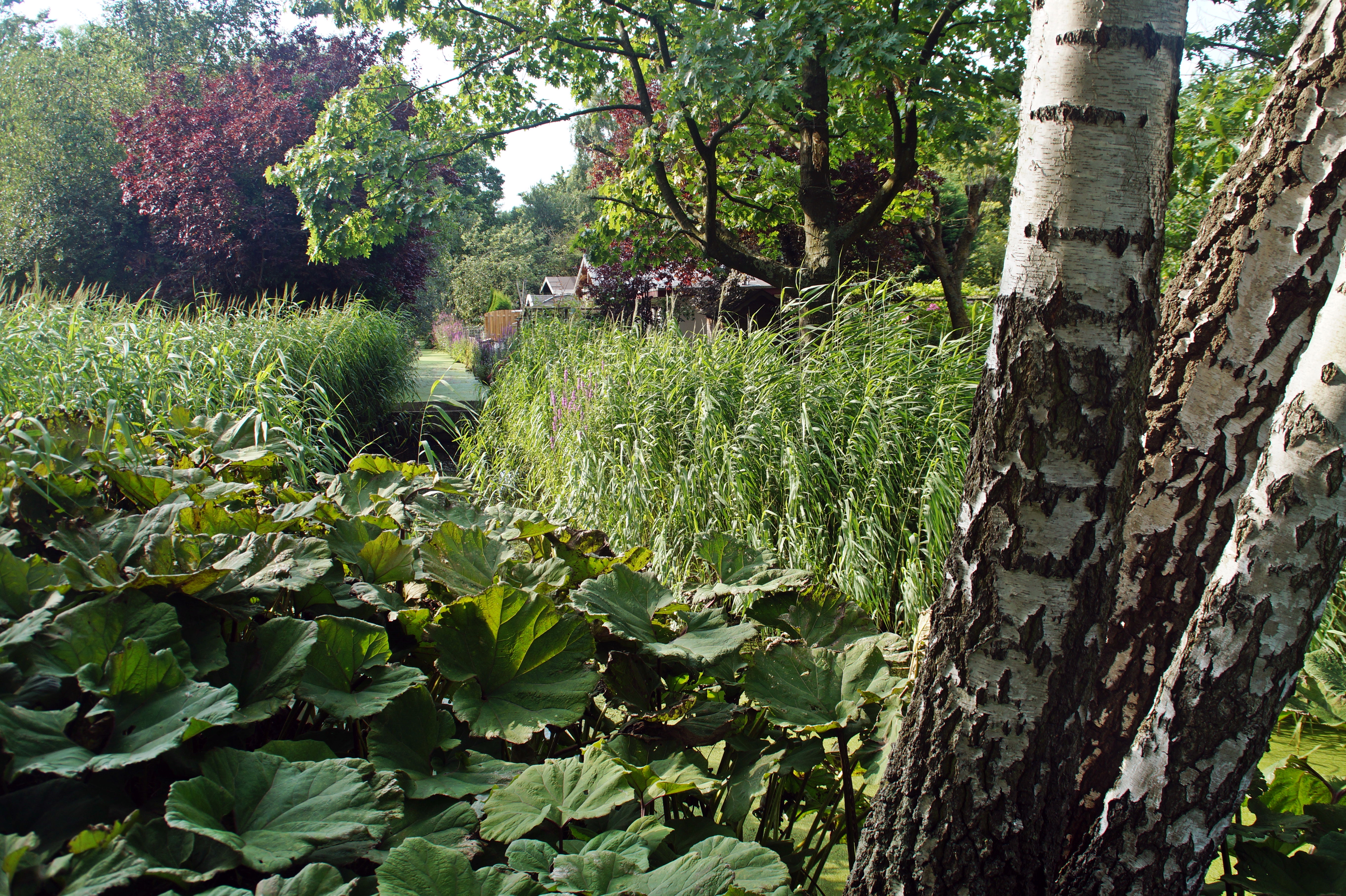
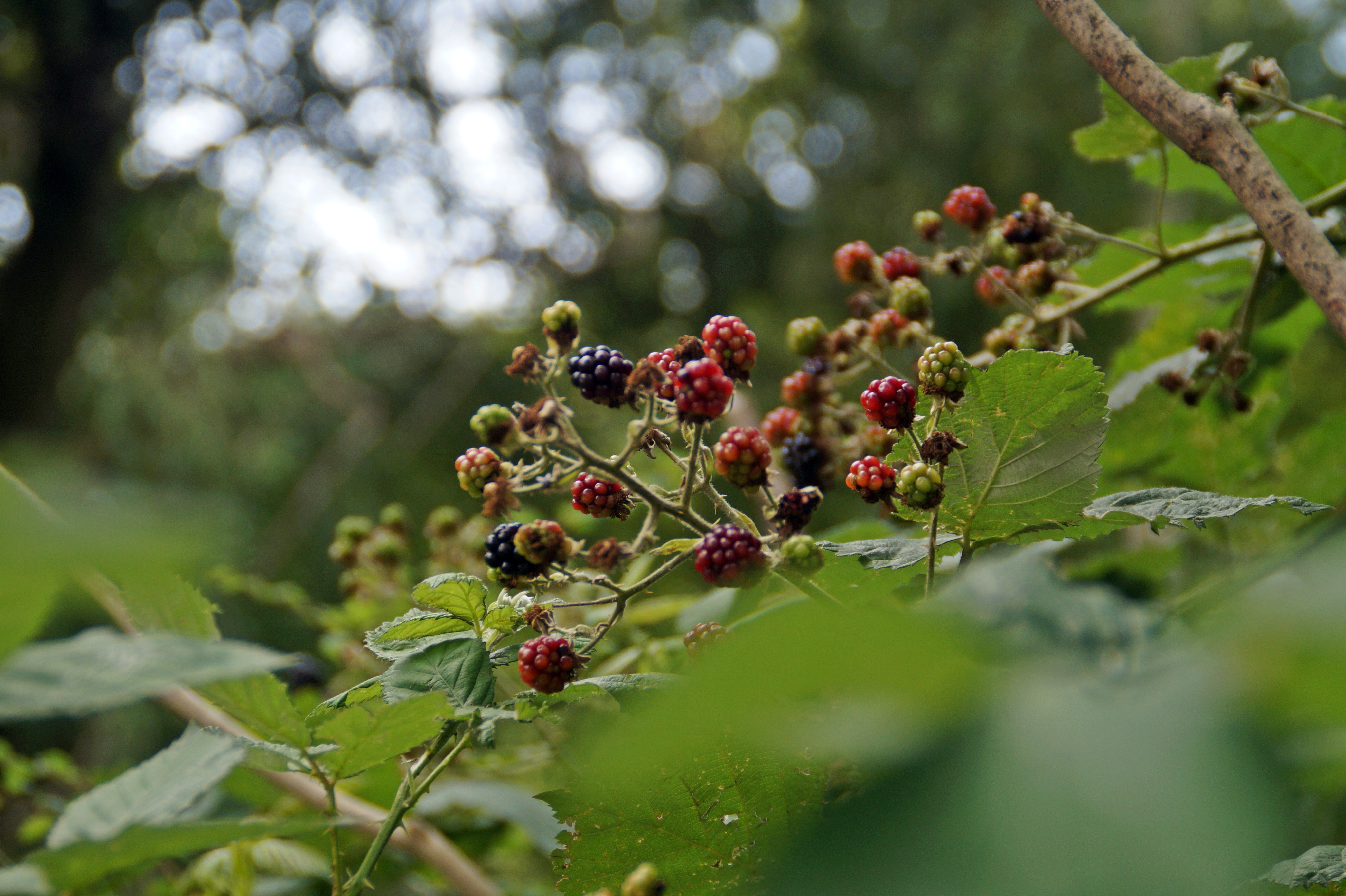
At 19.30, I caught a bus to Luxembourg City, where my next adventure would start the following morning.
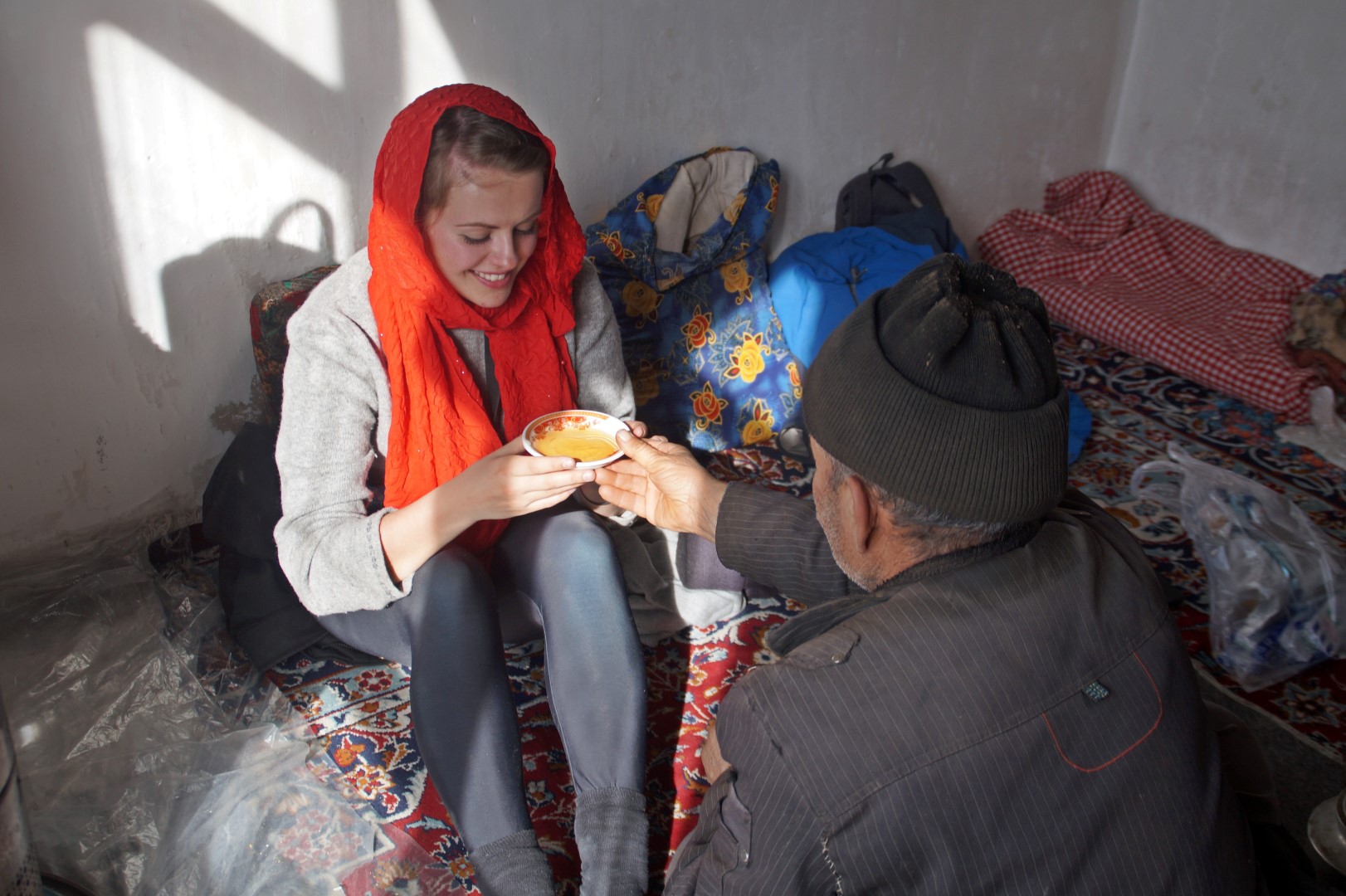



2 COMMENTS
Ann
7 years agoDear Mel, so happy to read your new post about your adventures in Amsterdam. It looks terrific through your fabulous photos and elegant narration, especially delicate part about Red Light street! Amsterdam triggers my attention and I’d love to visit it one day, I love the canal photos! Wish you interesting trip further and looking forward to reading something about Luxembourg! Stay in touch! Hugs!
Melissa Cherry
7 years agoI think you would enjoy Amsterdam, Ann! There are a lot of flowers all around the city, and I know you like flowers 😛 Luxembourg posts are coming up! Hopefully you’ll enjoy reading about that country too! 😀 xx